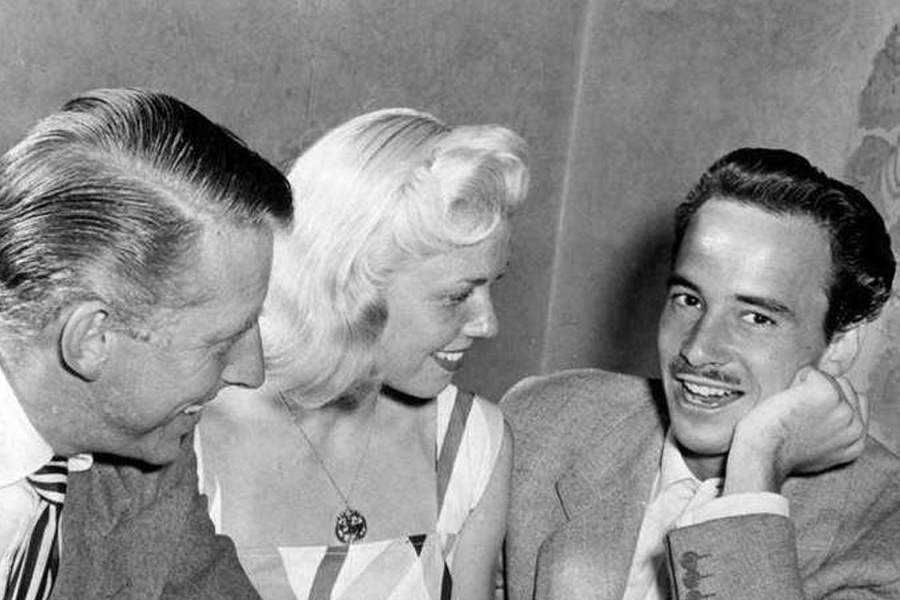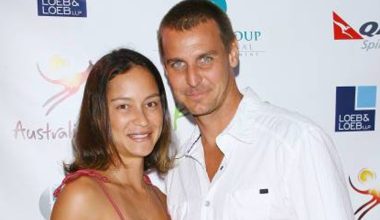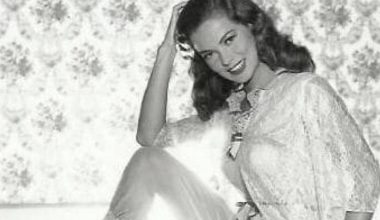Basic Information
| Attribute | Details |
|---|---|
| Full Name | George William Weidler |
| Birth Date | January 11, 1926 |
| Birth Place | Los Angeles, California, USA |
| Death Date | December 27, 1989 |
| Death Place | Los Angeles, California, USA |
| Profession | Saxophonist, Songwriter, Actor |
| Notable Roles | Jazz musician in big bands, child actor in early films |
| Marriages | 3 (Doris Day, Maureen Arthur, Barbara C. Heussenstamm) |
| Siblings | 5 (Virginia, Warner, Walter, Sylvia, Renee) |
Early Life and Family Roots
George Weidler emerged into the world on a crisp January day in 1926, amid the bustling streets of Los Angeles, a city pulsing like a jazz rhythm in its golden era. Born to Alfred Wilhelm Weidler, an architect who crafted intricate miniature sets for Hollywood studios—miniature worlds that mirrored the grand illusions of cinema—and Margarete Therese Louise Radon, his mother, George grew up in a household where creativity flowed like an unending melody. The Weidler family, with roots tracing back to artistic pursuits, fostered an environment ripe for talent. Alfred’s designs, precise and imaginative, perhaps instilled in his children a sense of structure amid the chaos of show business.
The siblings formed a vibrant ensemble, each contributing to the family’s harmonious yet chaotic symphony. Virginia Weidler, born in 1927, shone brightest as a child actress, captivating audiences in over 40 films during the 1930s and 1940s, her precocious charm a beacon in Hollywood’s star-studded sky. Warner Alfred Weidler, one of the brothers, delved into music and recording, building studios that captured the era’s sounds. Walter, also known as Wolfgang or Walt, mirrored this path, immersing himself in the recording industry, where notes and beats became their currency. Sylvia, listed as Waltraud in some records, and Renee, or Verena, rounded out the siblings, with Renee dipping into early show-business ventures. Together, the six children—George included—navigated the glittering yet treacherous waters of entertainment, their bonds a sturdy anchor against the industry’s tempests.
In this familial orchestra, George found his instrument early. Surrounded by siblings who pursued the spotlight, he absorbed the rhythms of life in a home where architecture met artistry, and Hollywood’s allure was as familiar as breakfast. By his teenage years, the pull of music had ensnared him, setting the stage for a career that would blend performance with composition.
Career Highlights
George Weidler’s professional journey unfolded like a saxophone solo—smooth, improvisational, and laced with unexpected turns. Starting in the 1930s and 1940s, he appeared in a handful of films as a child and young actor, his credits sparse but telling of an early brush with the silver screen. These roles, numbering fewer than a dozen, placed him alongside the era’s luminaries, a fleeting glimpse into acting before music claimed his soul.
By the mid-1940s, George had fully embraced the saxophone, joining big bands that swung through jazz clubs and recording sessions. His tenor sax wove through ensembles, contributing to the post-war jazz revival. As a songwriter, he penned tunes that echoed in vinyl grooves, with credits on releases that captured the spirit of the time. Collaborations with his brothers Warner and Walter amplified his reach; they established recording studios, turning family ties into professional synergies. In 1947 and 1948, portraits of George surfaced in archival collections, capturing him mid-performance, his instrument an extension of his being.
The 1950s and beyond saw George navigating Hollywood’s undercurrents, where music intersected with film soundtracks and studio work. Though not a household name like his sister Virginia, his contributions numbered in the dozens—sessions, compositions, and performances that enriched the cultural tapestry. Numbers tell part of the story: over four decades in music, with at least three documented marriages intertwining his personal and professional worlds. Yet, like a subtle chord progression, his achievements often lingered in the background, supporting the stars while carving his niche.
Personal Relationships and Marriages
Love in George Weidler’s life played out like a series of improvisational riffs—passionate, brief, and multifaceted. His first notable union was with Doris Day in 1946, a marriage that lasted until 1949. Doris, then an up-and-coming singer and actress, brought glamour to their bond, but the union dissolved amid the pressures of burgeoning careers, leaving echoes in biographical tales.
In the late 1950s, George wed Maureen Arthur, an actress whose presence added another layer to his Hollywood connections. Their marriage endured into the 1960s or 1970s, depending on the timeline, a period marked by shared artistic pursuits before parting ways. Finally, Barbara C. Heussenstamm entered the picture, her name appearing in registries as a spouse, though details remain as elusive as a fading note.
These relationships, totaling three confirmed marriages, wove through George’s life, intersecting with his family’s show-business legacy. No children are prominently recorded from these unions, but the entanglements highlighted his immersion in entertainment circles. Each partnership, like a verse in a song, added depth to his narrative, blending romance with the relentless beat of industry life.
Legacy and Remembrance
Even after his passing on December 27, 1989, George Weidler’s essence lingers in archives and collector circles, a quiet testament to a life in harmony with music’s flow. Portraits from 1947 and 1948, preserved in national libraries, depict him in his prime, saxophone in hand, eyes alight with melody. Genealogy sites and memorial pages keep his story alive, with fans of Virginia often invoking George in discussions, linking siblings across generations.
Collectors hunt for his vinyl recordings and memorabilia, items that fetch interest in auctions, numbering in the hundreds across online marketplaces. His work in big bands and studios endures through preserved tracks, a sonic footprint that jazz enthusiasts revisit. In family trees, his connections branch out, illustrating a clan where talent was inherited like a cherished heirloom.
The Weidler family’s collective impact—Virginia’s 40+ films, the brothers’ studios—amplifies George’s role, positioning him as a vital note in their chord. Remembrance groups on social platforms post tributes, especially around birthdays, ensuring his memory doesn’t fade into silence.
FAQ
Who was George Weidler’s most famous sibling?
Virginia Weidler, his younger sister, gained fame as a child actress in the 1930s and 1940s, appearing in numerous Hollywood films with her endearing performances.
What instruments did George Weidler play?
George primarily played the saxophone, specializing in tenor sax within jazz and big-band settings, where his skills contributed to various recordings and live performances.
How many times was George Weidler married?
He was married three times: first to Doris Day from 1946 to 1949, then to Maureen Arthur in the late 1950s until the 1960s or 1970s, and later to Barbara C. Heussenstamm.
What was George Weidler’s father’s profession?
Alfred Wilhelm Weidler worked as an architect and miniature-set designer for Hollywood studios, creating detailed models that supported the film industry’s visual storytelling.
Did George Weidler have any children?
No children are recorded from his marriages in available biographical details, focusing instead on his musical career and family connections.
When did George Weidler die?
He passed away on December 27, 1989, in Los Angeles, marking the end of a life dedicated to music and entertainment.
What genres of music did George Weidler contribute to?
George contributed to jazz and big-band music as a saxophonist and songwriter, with his work spanning recordings and performances in the mid-20th century.
How is George Weidler remembered today?
His legacy persists through archival portraits, genealogy sites, and collector memorabilia, with fans and family enthusiasts keeping his story alive in online communities.



